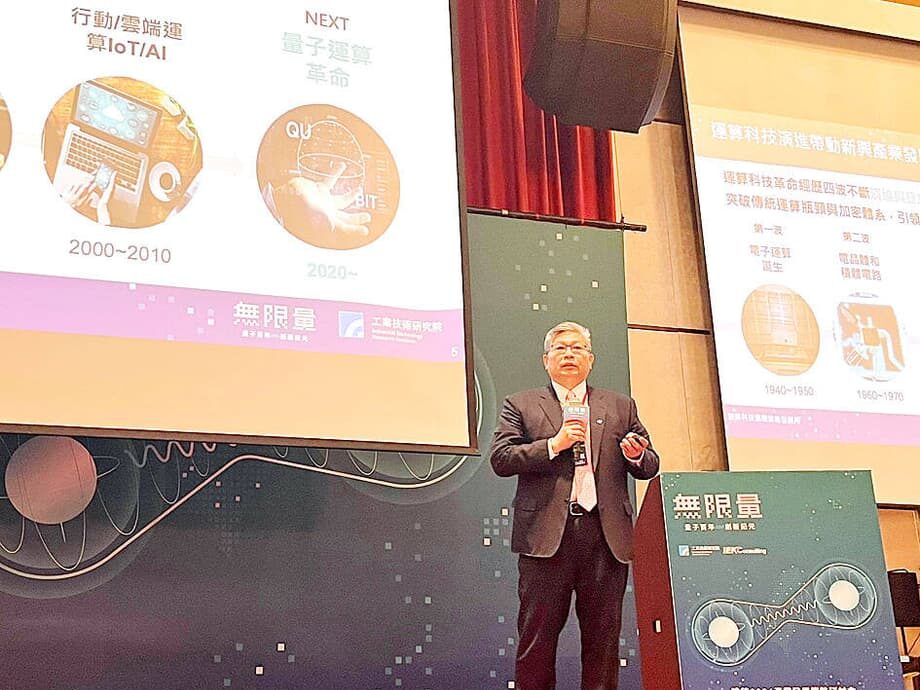Why Taiwan’s chip lead matters for quantum computing
Taiwan’s chipmaking strength is central to a new push to build a domestic quantum computing ecosystem. In recent days, senior voices from Academia Sinica and the Industrial Technology Research Institute urged the government and industry to turn the country’s semiconductor strengths into momentum for quantum hardware, software, and talent. Chips sit at the heart of every quantum system, from the qubit devices to the cryogenic control electronics. That gives Taiwan a practical opening to move faster than its size would suggest.
- Why Taiwan’s chip lead matters for quantum computing
- What experts in Taipei propose now
- Where Taiwan fits in the global race
- Which hardware paths make sense for Taiwan
- Talent and education
- Partnerships and governance
- Obstacles Taiwan must solve
- Near term plans and milestones
- Use cases to prioritize
- The Essentials
What sets quantum machines apart is the qubit, a device that can exist in multiple states at once. Qubits are fragile. Heat, vibration, and stray electrical signals destroy their information quickly. Most designs operate close to absolute zero. The chips that create, measure, and control those qubits must be precise, quiet, and reliable at cryogenic temperatures. Fabricating such parts draws on the same skills that power leading edge semiconductors, including precise lithography, advanced materials, and high yield process control.
Taiwan already produces most of the world’s cutting edge logic chips that drive artificial intelligence and high performance computing. Analysts estimate that Taiwanese fabs account for around 90 percent of the most advanced nodes used by global platforms. The country also leads in packaging and testing, which are critical for wiring dense devices that must fit inside dilution refrigerators. This mix of strengths is why local experts argue that Taiwan can translate chip leadership into practical progress in quantum.
From fabs to qubits, what carries over
Several capabilities transfer directly from modern semiconductor production to quantum research. Super precise lithography and cleanroom discipline support the fabrication of qubit structures in superconducting circuits and silicon quantum dots. Advanced packaging and interconnect help route thousands of control lines into cold environments without adding noise. Mature process control improves uniformity and yield, two variables that limit scale in today’s quantum devices. On the electronics side, Taiwan’s experience with radio frequency chips and high speed interfaces can aid the design of cryogenic control chips that sit close to the qubits and reduce wiring complexity.
What experts in Taipei propose now
Chen Chii-dong, a distinguished research fellow at Academia Sinica’s Research Center for Critical Issues and executive officer of its Thematic Center for Quantum Computing, outlined a clear goal: build capability at home. He argued that Taiwan should assemble a full stack effort that covers devices, control software, and testing platforms.
Introducing his case for a national push, Chen said Taiwan should turn its chip strengths into a complete quantum program and train specialists across fields. He put it plainly:
Taiwan has an absolute advantage in semiconductors that it should use to build its own quantum computing ecosystem and cultivate local talent.
He also pressed for a working prototype made in Taiwan. Constructing a domestic quantum computer is more than symbolic. The hands on effort would anchor supplier learning and tool development across the stack. As Chen explained:
Developing a homegrown quantum computer would stimulate advances in related hardware and control software.
Jeff Lin, general director of ITRI’s Industry, Science and Technology International Strategy Center, presented a policy and industry playbook. He urged Taiwan to focus on core quantum technologies linked to artificial intelligence, join supply chain partnerships with the United States, Europe and Japan, strengthen collaboration between industry and academia, and build a research and verification platform that speeds commercialization. He also called for rules on risk, data sovereignty, and ethics, along with legal and education reforms that support cross disciplinary talent. He framed the stakes this way:
Quantum technology has become the new strategic frontier following AI. Around 30 countries have already included it in their national development plans.
Lin’s plan also points to an ecosystem approach: a national testbed where startups and universities can validate ideas, a funding pipeline tied to milestones, and a program to turn research modules into industrial grade subsystems. The aim is faster learning cycles, shorter time between lab results and pilot deployments, and clearer paths for engineers moving from classical chip roles into quantum projects.
Where Taiwan fits in the global race
Quantum technology now sits inside a wider contest over chips, computing, and strategic industries. The United States and allies are investing at scale through public programs and private partnerships, while also tightening export rules on advanced tools headed to China. TSMC’s expansion in Arizona, backed by public funding, reflects the push to build resilient capacity in advanced semiconductors. These moves reshape where sensitive research happens and where future supply chains will sit.
China, for its part, is investing heavily to reduce its dependence on foreign technology. Policy banks, state funds, and provincial programs support domestic chip and quantum projects, paired with talent recruitment and new restrictions on strategic materials. This energy raises the stakes for Taiwan. The island’s chip sector sits at the center of global value chains, yet the industry also faces pressure to duplicate capability abroad and manage policy risk.
For Taiwan, that mix of opportunity and exposure argues for action. The country can use trusted partnerships to join international quantum consortia, while keeping high value work at home. It can also position itself as a bridge between classical chips and quantum experiments, an area where it already has scale, know how, and supplier depth.
Which hardware paths make sense for Taiwan
No single qubit design has won. Each leading approach carries tradeoffs in noise tolerance, operating temperature, gate speed, and ease of manufacturing. Taiwan does not need to cover every path. A better strategy is to pick niches that align with existing chip strengths and supplier clusters, then integrate those pieces into global programs.
Superconducting circuits
Superconducting qubits use Josephson junctions patterned on thin films that conduct electricity with zero resistance at very low temperatures. Fabrication requires clean superconducting films, accurate patterning, and careful surface treatment. The biggest bottlenecks are cryogenic packaging and microwave control. Taiwan’s advanced packaging houses can develop low loss interposers and three dimensional wiring that carry microwave signals into cryogenic stages. Local electronics teams can design compact control modules and filters that limit noise. Test labs can specialize in calibration routines that shorten the time needed to bring up new chips inside dilution refrigerators.
Spin qubits in silicon
Spin qubits in silicon are built from quantum dots formed in well understood semiconductor stacks. The appeal is clear. In principle, these devices can ride the same lithography and process control that already exist in leading fabs. Global programs show that silicon spin devices can be produced on conventional tools, then paired with cryogenic control circuits. If qubits can operate closer to 4 kelvin rather than millikelvin, integration with low temperature CMOS becomes easier and wiring can be simplified. Taiwan’s foundries and design houses are well placed to explore this route, especially if a national project funds shared process development kits, shuttle runs, and cryogenic electronic design automation tools.
Photonic and ion systems
Trapped ions and photonic qubits rely more on precision optics, lasers, and vacuum systems than on conventional silicon steps. Even here, Taiwan can contribute. Integrated photonics, optical packaging, and specialty materials are areas where existing suppliers can adapt their skills. Universities can lead in stable laser sources, optical switching, and quantum repeaters for secure communications.
Across all modalities, two themes recur. First, cryogenic infrastructure and measurement talent are essential. Second, hybrid designs that combine a quantum processor with classical accelerators will dominate early applications. Taiwan’s proximity to high performance computing supply chains is a structural advantage for that hybrid model.
Talent and education
Quantum computing blends physics, computer science, electrical engineering, materials science, and applied mathematics. Chen emphasized the time needed to grow expertise and urged students and mid career engineers to enter the field from physics, information science, electrical engineering, and electronics. Course pathways that move from linear algebra and quantum mechanics to control theory and cryogenic engineering can bring new entrants up to speed.
Taiwan has started to organize. The Taiwan Quantum Program Office (2021) and the National Quantum Team (2022) were set up with a multi year budget that totals about 259 million US dollars over five years. Their agendas cover quantum computer hardware, optics, software, and applications. Local projects have reported prototypes, including an indigenously built quantum computer and demonstrations in quantum key distribution. The country is also active in post quantum cryptography and hosts a Quantum Safe Migration Center that helps institutions plan upgrades for future attacks by quantum machines.
Partnerships and governance
Officials and researchers argue that Taiwan should deepen cooperation with the United States, Europe, and Japan in both research and supply chains. Participation in global programs gives access to shared testbeds, fabrication runs, and standards. Collaboration with India is another promising channel, given India’s National Quantum Mission and its strengths in quantum communication and sensing. Joint projects could pair Taiwan’s device and chip expertise with partner strengths in algorithms, metrology, and networked systems.
Governance needs attention too. Jeff Lin has urged a comprehensive framework that covers risk assessment, data sovereignty, and ethics. The transition to post quantum cryptography should be scheduled and tested across critical infrastructure, with procurement and compliance milestones. Export control rules, intellectual property protections, and security protocols will shape who can work on which projects and what equipment can be shared. Clear policies reduce uncertainty for startups and researchers, while building trust with international partners.
Obstacles Taiwan must solve
Specialized equipment is scarce. Dilution refrigerators, low temperature probe stations, and high frequency measurement gear are expensive and in short supply. Shared facilities can relieve the bottleneck, but they need sustained funding and skilled operators. Foundry time is another constraint, as production lines are saturated with high demand AI and server chips. Without dedicated process modules and shuttle schedules, quantum devices will wait in queue behind commercial orders.
Industry examples show why tight coupling between semiconductor tools and quantum research matters. Large programs abroad are experimenting with silicon spin qubits on standard processes, while building cryogenic control chips and test infrastructure around them. The lesson is not that Taiwan must copy any one approach. The lesson is that quantum teams need access to advanced lithography, metrology, and packaging today. Taiwan has the know how to pursue these routes if it commits the tools, people, and time.
Near term plans and milestones
Taiwan’s National Science and Technology Council plans a quantum computing mainframe construction project in 2026. The goal is to connect a quantum mainframe with high performance computing platforms, creating a hybrid resource that researchers and industry can access. This mirrors a global trend toward pairing quantum processors with supercomputers and AI accelerators for practical workloads.
Several concrete steps could accelerate progress. A national cryogenic center with multiple refrigerator bays and a service model would shorten wait times for experiments. A program for cryogenic CMOS control chips would bring design houses into the field and create reusable building blocks. A pilot packaging line for superconducting and spin qubits would let teams iterate on low loss interconnects and 3D wiring. Regular fabrication shuttle runs with process development kits tailored to quantum devices would build device statistics and improve yield. A public test and verification platform would give startups a place to validate components, while an innovation fund tied to clear technical milestones would help bridge the gap between lab results and early products.
Use cases to prioritize
Several application areas align with Taiwan’s strengths. In semiconductors, quantum inspired algorithms and, later, small quantum accelerators can aid materials discovery, process simulation, and design optimization. In cybersecurity, government and finance can schedule the shift to post quantum cryptography and test quantum communication links for sensitive traffic. In healthcare, quantum methods may help with protein modeling or imaging reconstruction once hardware matures. In energy and manufacturing, hybrid quantum and classical workflows could improve scheduling and logistics inside complex supply chains. Each of these paths rewards early testing, even before large fault tolerant machines exist.
The Essentials
- Academia Sinica’s Chen Chii-dong urges Taiwan to build a homegrown quantum computer to drive progress in hardware, control software, and testing.
- ITRI’s Jeff Lin calls for a national plan focused on core technologies linked to AI, global partnerships, governance for risk and data, and a research and verification platform.
- Taiwan’s chip strengths in fabrication, packaging, and testing can support superconducting, silicon spin, and photonic quantum projects.
- Geopolitics is reshaping supply chains. The United States and allies are investing and tightening controls while China pushes for self reliance.
- Taiwan has organized national programs, including the Taiwan Quantum Program Office (2021) and the National Quantum Team (2022) with a multiyear budget.
- Key gaps include limited cryogenic infrastructure, scarce specialized equipment, and foundry access. Shared facilities and dedicated shuttle runs can help.
- The NSTC plans a quantum and HPC integration project in 2026 to create a hybrid resource for research and industry.
- Priority use cases include materials and chip R and D, post quantum cryptography, quantum communication, and supply chain optimization.




